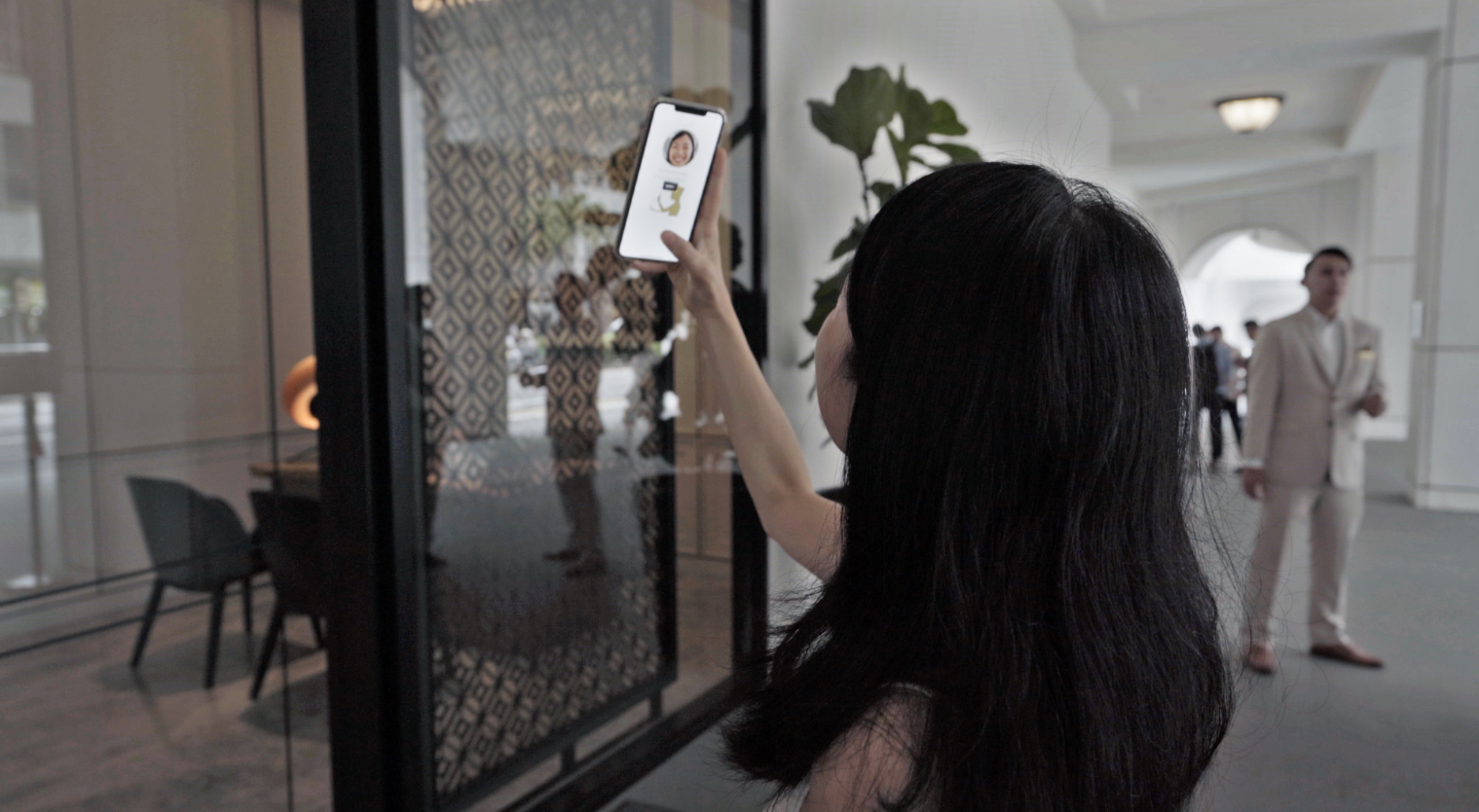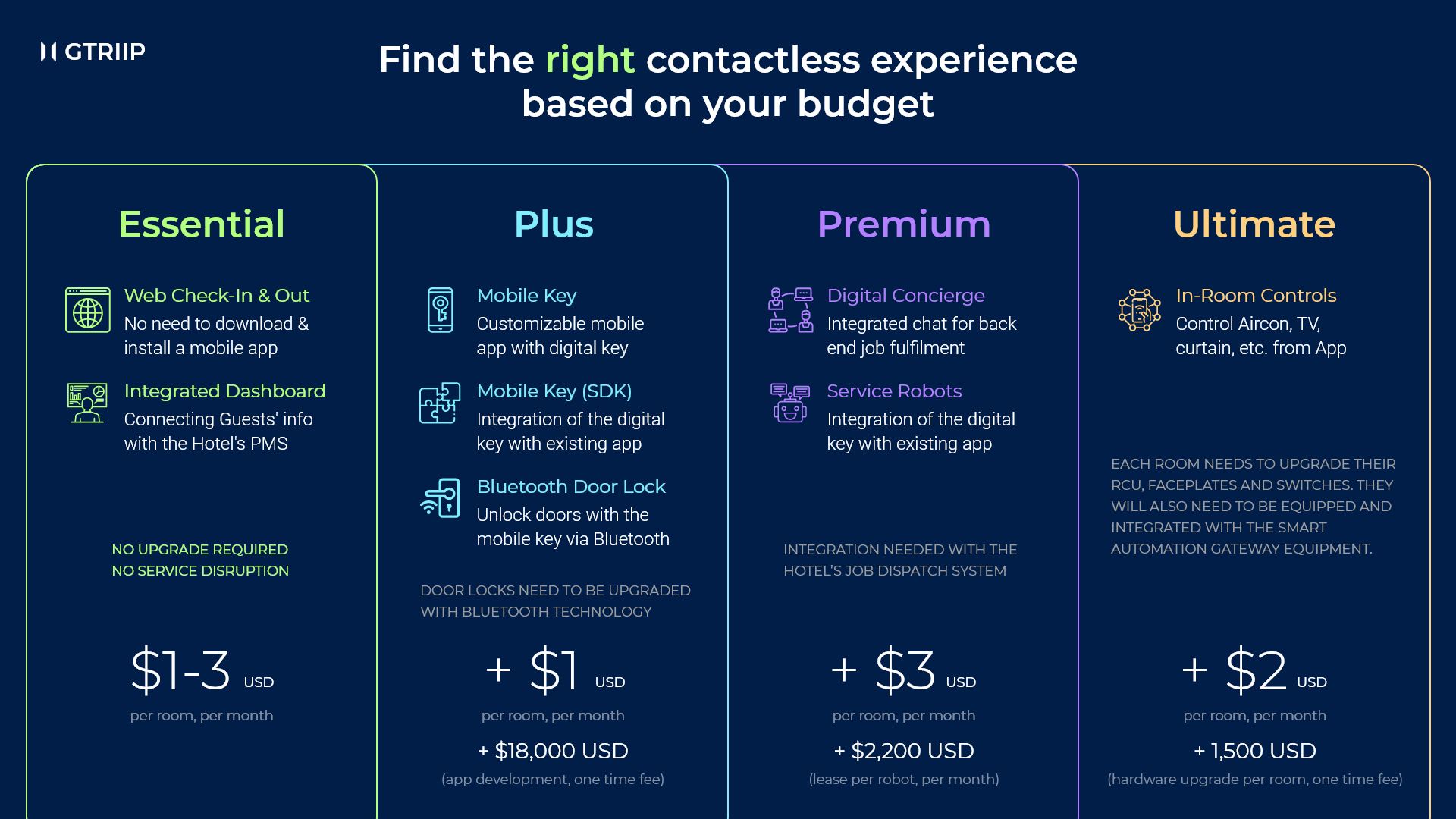for support
(888)123-4567
Due to the new norm, many travellers are now looking at ways to have a safer hotel experience, which means making minimum to zero contact with other people, equipment and common touchpoints.
This is where contactless solutions come in.
For instance, front desk transactions need to be performed without the exchange of physical papers and credit cards. More than contactless, the processes need to be performed without compromising on data security, especially when transmitting data between different systems such as the guest’s mobile device, hotel’s management systems and customer relationship management (CRM) software.
In addition, hotels will now have to perform their operations with very lean manpower to keep operating expenses low. These challenges would nudge many hotels to adopt contactless solutions to remain profitable, especially when occupancy rates are at an all-time low.
Revenue vs Contactless Experience
As far as hoteliers are concerned, a lower occupancy rate translates to a decrease in revenue — this means that every dollar spent on providing guests with the ultimate contactless experience needs to be justified through its return on investment (ROI).
With this backdrop in mind, the following are some practical advice on various ways that hotels – from large to small – can provide guests with an exceptional contactless experience through GTRIIP, along with estimated budget considerations and analysis of the pros and cons for each approach.

Essential: Web Check-in and Check-out
At the first entry point, GTRIIP’s web check-in and check-out feature simplify the guest registration process while doing away with items such as pen, paper and credit card — all of which requires more touchpoints and hence poses higher risks of virus transmission.
This new technology will allow guests to complete their pre-arrival registration, and check-in and check-out on their own mobile device without having to download any applications, further amplifying its App-less and contactless check-in process.
In terms of the user interface, front office staff will be able to operate the whole process through GTRIIP’s dashboard. There, guests' identity is validated through an automated machine learning process by matching their photo ID against a selfie. Upon verification, their data will flow seamlessly into the hotel’s property management system, securely.
The best part about these entry-level implementations? There’s less service disruption and requires minimal training for front office employees. The features allow for plug and play with existing management systems. Most importantly, hoteliers need not invest in hardware upgrades or native app development fees.
By deploying GTRIIP’s contactless solutions, the investment outlay could be as low as USD $1 per month for each room.
Plus: Mobile Key
While digital room keys are far from a new concept, it has been gaining momentum and popularity over the past years. Upon successful check-in, guests will be issued a digital room key right on their smartphones — a convenient and desirable alternative to physical key cards.
Just a few weeks ago, Accor, a French multinational hospitality company, announced the implementation of its own digital keys in its new properties in 2021, with a target of 50% of all its rooms within the next five years.
Without requiring too much software upgrades, adopting mobile key technology is truly a cost-effective way hotels can choose to go contactless. Hotels without a mobile app to house the digital key would only require a one-time investment for the app development fee.
For hotels who have their own developed apps, all they have to do is to integrate them with a software development kit (SDK) that allows hotels to use their existing apps with mobile key software functionality.
To proceed with the GTRIIP mobile key module, hotels have to factor in the buying of software for an additional USD $1 per room and a one-time app development fee, while also considering smart-bluetooth door-lock upgrades for system and practical compatibility.
Premium: Contactless Concierge and Robots
User experience and behaviour are changing as we speak. Rather than talking on the phone, most users prefer to text on WhatsApp or WeChat. This preference is also seeping into the hotel experience. Guests can now communicate directly with hotel staff through chat functions, which can be defined as an in-app digital concierge. Hotels can also automate chatbots to handle simple and frequently asked questions.
This automation in chat communication can also be applied to hotel dispatch services, including the delivery of pillows, extra blankets and dining orders. Rather than using manpower, some hotels have invested in making this process contactless through robots.
On average, hotels are charged an additional USD $2 for the chat software function. The robots, on the other hand, are leased out for around USD $2000 per month. Integration fees might also apply especially if the robots are required to communicate with the hotel’s lift control system to move to the desired floor.
Ultimate: In-Room Control
More than the above, imagine hotels providing a five-star experience just by integrating in-room controls with guests’ smartphone, allowing them to remotely control light switches, television and air conditioner. While it’s completely contactless, hotel owners have to pay close attention to their budget outlay. Allowing smartphones to communicate directly with the room controls would require additional software, costing an additional USD $2 per room.
However, hotels have to carry out renovations to incorporate smart faceplates switches and room control units (RCU) into the rooms. Depending on the floor plan, this can cost the hotels anywhere in the between of USD $1000 to USD $2000 for each room.
Conclusion
In summary, there are no two hotels that are the same, despite being from the same franchise. The decision on the best approach lies in identifying specific hotels’ target audience and determine a suitable contactless experience.
Hotels will also need to perceive contactless solutions as a long-term investment rather than a one-off purchase. Being environmentally friendly and sustainable is also an uphill trend amongst hotels, so it will augur well to plan the contactless approach with minimum hardware investment which might become obsolete very soon.
To find out more about GTRIIP's contactless check-in and check-out solutions, with built-in high-end encryptions, head to this link: www.gtriip.com/hotel/
Learn more about the full range of contactless solutions that GTRIIP provides by reaching out to us via the link below. www.gtriip.com/consult-with-us/